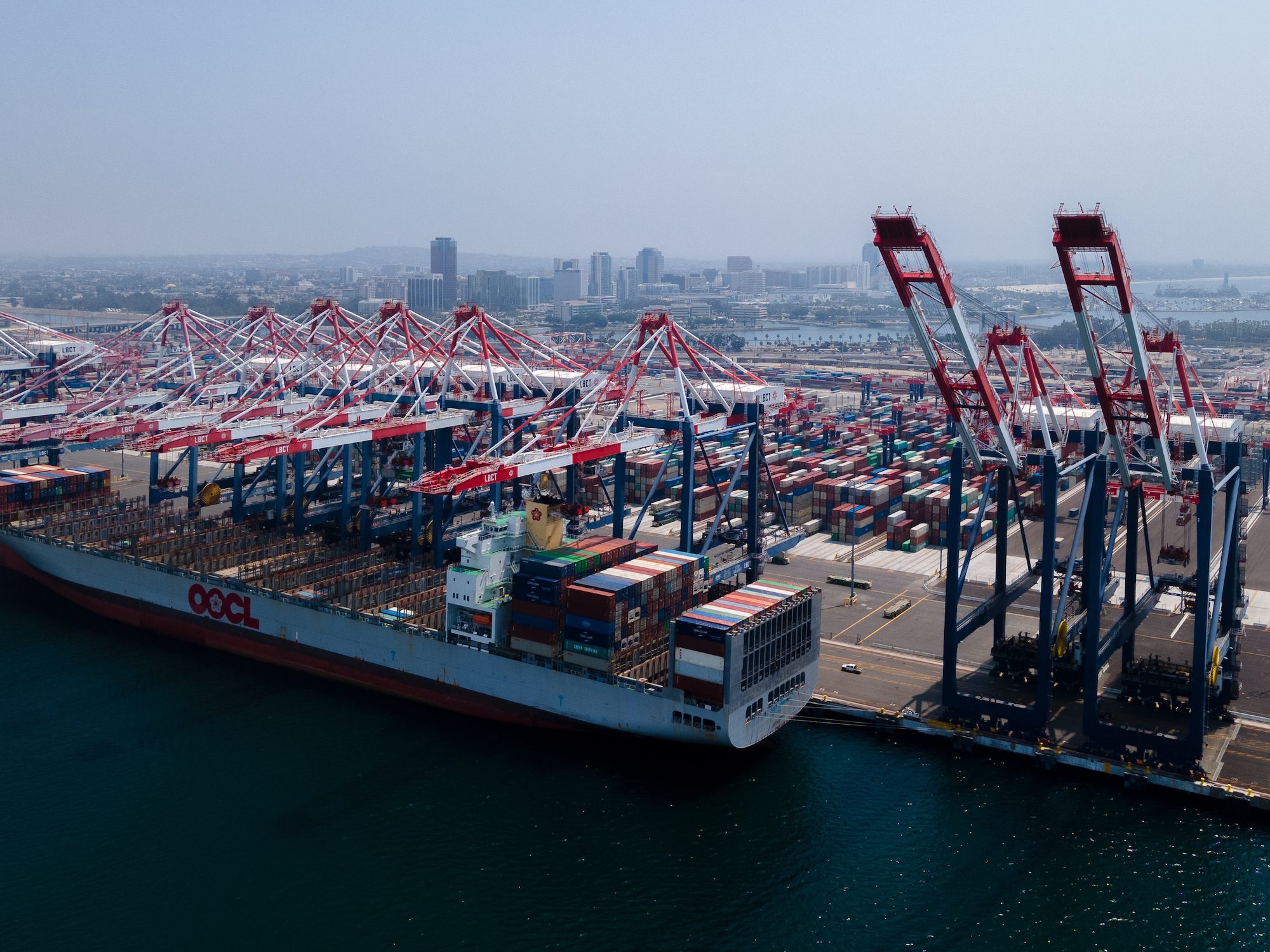MSC’s Record-Breaking Orderbook Sails Past 2M TEUs
MSC has returned to Zhoushan Changhong International Shipyard for up to eight 21,700 teu LNG dual-fuelled ships, as the Swiss-Italian carrier consolidates its pole position among liner operators.


An OOCL containership at the Port of Long Beach. Photo: Richard H Grant / Shutterstock.com
The Office of the United States Trade Representative (USTR) has announced sweeping new measures targeting China’s growing dominance in global maritime sectors, including potential fees of up to $1.5 million per port call for Chinese-built vessels, $1 million per port call for operators of Chinese-built ships, and mandatory U.S.-flag shipping requirements.
The proposed actions, published to the Federal Register on Friday by Acting U.S. Trade Representative Juan Millan, come after a recent USTR Section 301 investigation found that “China’s acts, policies, and practices to be unreasonable and to burden or restrict US commerce.”
The investigation was initiated following a petition filed in March 2024 by five major U.S. labor unions, including the United Steel Workers and the Maritime Trades Department, AFL-CIO?
The USTR’s findings reveal China’s dramatic rise in global ship production—from less than 5% in 1999 to over 50% in 2023. China also dominates the maritime supply chain, controlling 95% of global shipping container production and 86% of the world’s intermodal chassis supply. Additionally, China’s ownership of the global commercial fleet has reached over 19% as of January 2024.
“China frames its targeting for dominance in the maritime, logistics, and shipbuilding sectors in nationalistic terms as a zero-sum contest pitting companies it controls against all others,” states the USTR report, which also highlights how China’s state-backed entities benefit from extensive subsidies, preferential financing, and regulatory advantages that distort global competition.
In response, the USTR has now proposed a series of aggressive measures that could significantly reshape the maritime trade landscape.
The proposed measures not only include a flat fee of $1,500,000 per port call of a Chinese-built vessel to a U.S. port, but also tiered fees per U.S. port call for operators with exposure to Chinese-built ships and newbuild orders at Chinese yards. For example, operators with fleets comprising more than 50% Chinese-built vessels could face fees up to $1 million per U.S. port call, while those with 25-50% Chinese-built vessels would pay up to $750,000 per call. Vessel operators with shipbuilding orders in China could also face fees up to $1 million per port call, based on orderbook composition.
The proposal would also mandate increasing percentages of U.S. exports to be carried on American-flag vessels. Starting at 1% of cargo immediately upon implementation, the requirements would rise to 15% within seven years, with specific allocations for U.S.-built vessels.
The action also targets China’s LOGINK logistics platform, citing concerns about sensitive data access. The proposal suggests potential restrictions or bans on LOGINK’s use in U.S. ports.
In the initial petition, the five labor unions called for fees on Chinese-built vessels docking at US ports, with costs varying based on vessel tonnage and age, with higher fees on newer and larger ships. A proposed “US Commercial Shipbuilding Revitalization Fund” would collect these fees to support the Construction Differential Subsidy program, which historically supported domestic shipbuilding before its 1982 defunding.
The U.S. government’s proposed trade actions mark one of the most significant attempts to curb China’s growing dominance in global shipping and shipbuilding. However, the proposed measures also carry risks, including potential supply chain disruptions and retaliatory actions from Beijing.
Industry stakeholders can provide feedback on the proposed measures at a public hearing scheduled for March 24, 2025, at the International Trade Commission. Written comments must be submitted by the same date.
Join the gCaptain Club for curated content, insider opinions, and vibrant community discussions.


Join the 108,816 members that receive our newsletter.
Have a news tip? Let us know.







Maritime and offshore news trusted by our 108,816 members delivered daily straight to your inbox.



Essential news coupled with the finest maritime content sourced from across the globe.
Sign Up